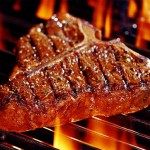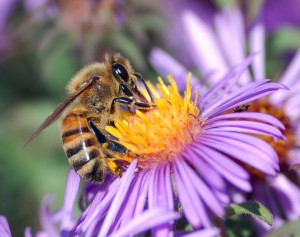
It turns out that cavemen might not have chomped away on gigantic bison burgers as we often think. It had been estimated that protein intake made up 60-80 percent of the caveman’s diet. A new study suggests that this is wrong as only about 45 percent of the modern diet consists of protein. And that is protein of any type, not just from meat. From Scientific American:
[M]any studies estimate that between 60 and 80 percent of the prehistoric human diet came from proteins, with most of that from animal sources.
That was surprising because no more than 45 percent of modern diets come from protein of any type.
…
That contradiction led O’Connell to wonder if the offset was wrong because it relied on animal estimates, not humans.
To find out, her team took human blood samples from a study where scientists meticulously re-created people’s usual diets, measured exactly how much they ate over a week, and took precise samples of each meal. By comparing the nitrogen isotope ratios in the food and human blood samples, they were able to estimate how much heavy nitrogen the human body stores. (They then extrapolated their estimate for blood samples to human hair and to bone.)
Previous estimates based on animal studies were too small and thus inflated how much animal protein our ancient ancestors ate, she said.
Instea
“We are suggesting that animal proteins would be less important overall and that’s particularly true for interpretations of Neolithic farmers,” she said. “What that would mean is that they are having more of a balance of animal and plant proteins in their diet, suggestive of a mixed existence strategy.”d, the first farmers, who lived around 12,000 years ago, likely ate no more than 40 to 50 percent of their protein from animal sources. Those people ate a diet more similar to subsistence farmers in modern-day India or China, O’Connell said. Hunter-gatherers from the Paleolithic period also ate less meat, she added.


